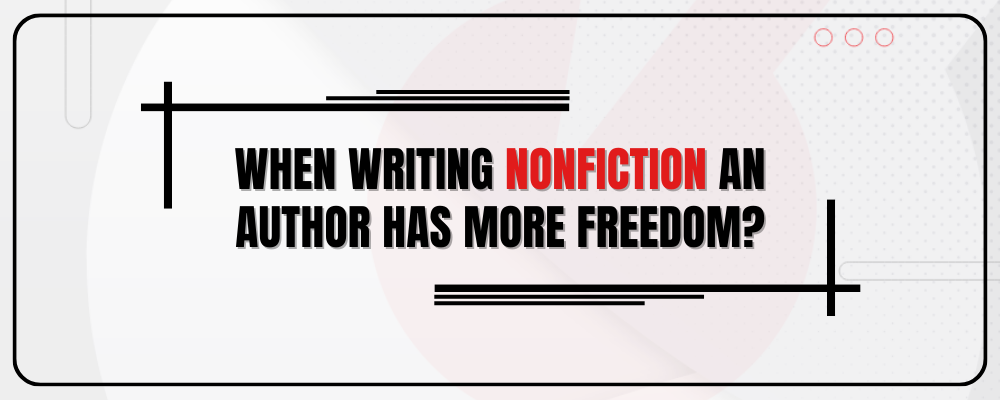In nonfiction writing, authors have a lot of freedom to be creative and engaging while still sticking to the facts. This freedom comes from the flexibility of the genre, which includes various types of writing like essays, memoirs, and journalism.
One way authors enjoy freedom in nonfiction is through their narrative voice. Unlike formal writing, nonfiction allows authors to infuse their work with personality and emotions.
For instance, in “In Cold Blood” by Truman Capote, he uses a storytelling style to describe a real crime, making it more interesting and emotionally compelling that felt more like fiction than traditional journalism.
Capote immerses readers in the lives of the Clutter family and their murderers, Perry Smith and Richard “Dick” Hickock.
His narrative style creates a sense of intimacy, capturing both the horror of the crime and the humanity of the individuals involved.
For example, in this passage, Capote conveys the emotional weight of the tragedy:
“The village of Holcomb stands on the high wheat plains of western Kansas, a lonesome area that other Kansans call ‘out there.’ … The land is flat, the views are awesomely extensive; horses, herds of cattle, a white cluster of grain elevators rising gracefully as Greek temples are visible long before a traveler reaches them.”
Through vivid description and a distinctive voice, Capote transforms a true crime story into a gripping narrative that resonates on a deeply human level.
Another aspect is the flexibility in structure. Nonfiction writers can experiment with how they organize their information. Instead of a straightforward timeline, they can use flashbacks or alternate between different perspectives.
In “The Immortal Life of Henrietta Lacks” by Rebecca Skloot, the author tells a story by switching between historical events and her own experiences, creating a more dynamic narrative.
This blending of past and present, science and personal narrative, allows for a more engaging reading experience.
In this excerpt, Skloot transitions between historical context and her personal involvement:
“Henrietta Lacks was born Loretta Pleasant in Roanoke, Virginia, on August 1, 1920. … My own journey into the life of Henrietta Lacks began with one small, seemingly innocuous statement. ‘The woman used to work in the hospital,’ my mother told me.”
Skloot’s structural choices contribute to the dynamic nature of the narrative, providing readers with a comprehensive understanding of Henrietta’s story while keeping them emotionally invested.
Nonfiction authors can also play with language and metaphors to convey complex ideas. In “Consider the Lobster” by David Foster Wallace, he uses a unique writing style to explore the ethics of cooking lobsters alive, adding humor and philosophy to a seemingly simple topic.
In this passage, Wallace reflects on the lobster’s experience:
“However stuporous the lobster is from the trip home, for instance, it tends to come alarmingly to life when placed in boiling water. If you’re tilting it from a container into the steaming kettle, the lobster will sometimes try to cling to the container’s sides or even to hook its claws over the kettle’s rim like a person trying to keep from going over the edge of a roof.”
Wallace’s vivid and imaginative language transforms a seemingly mundane topic into a thought-provoking exploration of ethics and empathy.
Furthermore, nonfiction allows writers to blend different genres.
Mary Roach’s “Stiff” combines scientific information about human cadavers with humor, making a potentially grim subject both informative and entertaining.
In this excerpt, Roach humorously discusses the various uses of cadavers:
“The human head is of the same approximate size and weight as a roaster chicken. I have never before had occasion to make the comparison, for never before today have I seen a head in a roasting pan.”
Roach keeps factual accuracy intact while making the study of scientific subjects approachable and enjoyable by incorporating humor into it.
These examples show how authors of nonfiction use their flexibility to craft engaging stories, play with structure, use inventive language, and merge genres. By using these strategies, nonfiction literature becomes more interesting and educational while also improving the entire reading experience.
In simple terms, nonfiction authors have the freedom to:
- Use a Personal Voice: They can make their writing more relatable and emotional by expressing their own thoughts and feelings.
- Experiment with Structure: Instead of a typical beginning-to-end approach, they can mix up timelines or perspectives to make the writing more engaging.
- Get Creative with Language: Nonfiction writers can use expressive language and metaphors to make their writing more interesting.
- Blend Genres: They can mix different styles, like combining science with humor, to make their work unique and enjoyable.
FAQs about the freedom in nonfiction writing
How much creative liberty can an author take in nonfiction writing?
Nonfiction authors have the freedom to employ creative techniques such as vivid descriptions, engaging anecdotes, and storytelling elements to make their content more compelling. However, they must balance creativity with accuracy, ensuring that the information presented is factually correct.
Can an author express personal opinions in nonfiction?
Yes, nonfiction authors can express their opinions, but it is crucial to distinguish between opinions and factual information. Authors should support their opinions with evidence and maintain transparency about their perspective. Presenting a well-reasoned argument is acceptable, but misrepresenting facts is generally discouraged.
What is the role of research in nonfiction writing?
Research is a fundamental aspect of nonfiction writing, providing authors with the necessary information to support their claims and present a well-rounded perspective. Authors have the responsibility to thoroughly research their topics, cite reliable sources, and ensure the accuracy of the information they convey.
How do authors maintain credibility in nonfiction writing?
Credibility is crucial in nonfiction, and authors build it by citing reputable sources, providing accurate information, and avoiding personal biases that may distort the narrative. Clear and transparent attribution of information helps readers trust the author’s expertise and enhances the overall credibility of the work.
What are the ethical considerations in nonfiction writing?
Nonfiction authors need to adhere to ethical standards, including accurate representation of facts, avoiding plagiarism, and respecting the privacy and rights of individuals mentioned in the work. Ethical considerations also involve disclosing any potential conflicts of interest that may influence the author’s perspective.
How can an author engage readers in nonfiction writing?
Engaging readers in nonfiction involves using storytelling techniques, incorporating relatable examples, and presenting information in a compelling manner. Authors can make their work accessible by avoiding jargon, organizing content logically, and maintaining a conversational tone, all of which contribute to a more enjoyable and informative reading experience.






